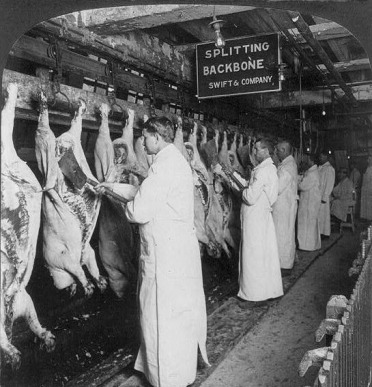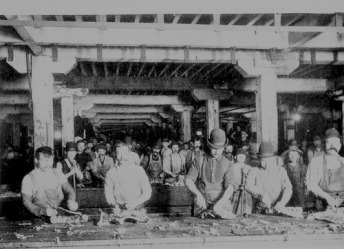The Swift Meat Packing Plant
|
Ford’s demand for cars was at a rate higher than they could be manufactured. William Klann was part of a team of advisors that Ford sent out to find a better means of production. Klann stumbled upon the Swift Meatpacking industry—located in Chicago—which was actually a disassembly line. Workers used the system to take apart pigs and cows. It was one of Ford’s greatest influences in his development of the moving assembly line.
Workers at the Chicago Meat Packing Factory
“The idea came in a general way from the overhead trolley that the Chicago packers use in dressing beef.”
~Henry Ford |
Amanda Ross, an employee at the Henry Ford Museum, talks about the Chicago Meat Packing Plant in a personal interview.
Employees working on a "disassembly" line at the Chicago Meat Packing Factory
"Prototypes of the assembly line can be traced back to ancient times, but the immediate precursor of Ford's industrial technique was 19th-century meat-packing plants in Chicago and Cincinnati, where cows and hogs were slaughtered, dressed, and packed using overhead trolleys that took the meat from worker to worker. Inspired by the meat packers, the Ford Motor Company innovated new assembly line techniques and in early 1913 installed its first moving assembly line at Highland Park for the manufacture of flywheel magnetos."
~history.com |


